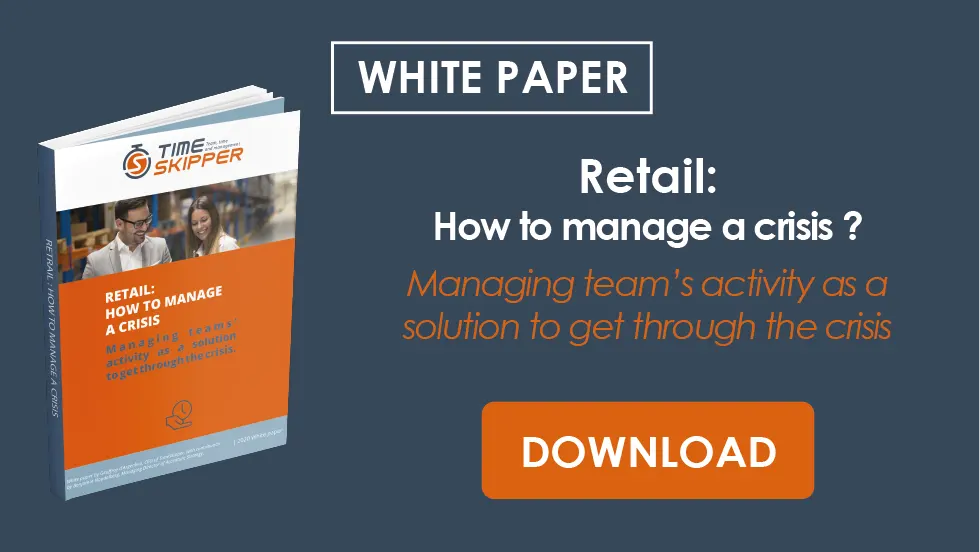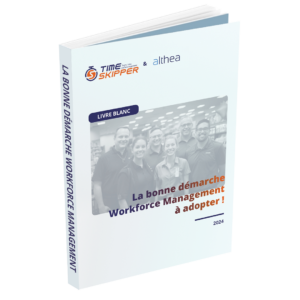Introduction
The decline in consumption is no longer a secret! Amid inflation, households are reviewing their spending. Exacerbated by gloomy weather since spring, clothing has been a category targeted for savings! The anticipated 1% decrease in the ready-to-wear market in 2024, following a 0.5% drop in sales in 2023 [1], seems to be confirmed with the latest summer store sales figures [2] : -0.5% in July and -0.3% in August.
In this challenging environment, the room for maneuver for textile retailers is limited. Specialized stores, for example, are often squeezed, facing increasing costs that they can hardly pass on to their product prices without risking customer loss, especially as new disruptive players (discount, ultra-fast fashion, second-hand) offer strong competition in terms of pricing.
Beyond this difficult economic situation, the textile market has been undergoing profound transformation for several years: changing consumer behaviors, reconfiguration of players, new distribution channels, evolving commercial strategies…
Many changes necessitate a review of the sector’s economic performance, the main structural evolutions, and an understanding of why some players are doing better than others. Finally, we will see how TimeSkipper supports these retailers in navigating this crisis and accompanying their transformation.
[1] Decline in market value (Source: Xerfi: Distribution of Adult Ready-to-Wear - Analysis and Forecast 2023 and 2024)[2] LSA: “A gloomy summer for the clothing sector” September 3, 2024
A Complex Economic Context for Textile Retailers
The Financial Performance of the Sector is in Decline
The gross operating surplus (EBE) of the ready-to-wear (PAP) sector is historically low. Estimated at only 3.7% of sales in 2024 [1], it is 2.5 points lower than in 2017 and 0.8 points lower than during the health crisis.
This result is due to a “scissors effect” with a slowdown in sales that inflation had so far contained, combined with an increase in costs that are difficult to control and pass on to the selling price.
The ready-to-wear market, estimated at €18 billion across all channels, has been experiencing a decline in sales value and volume in 2024. Over the past four years, stores have lost 18.8% [2] of their footfall, equivalent to nearly one in five customers.
As for cost items for PAP retailers, they do not always have control over them, although this may vary depending on the distribution channels: specialized and mixed chains, mass distribution or independent multibrands, and alternative channels such as supermarkets and pure players…
- While the anticipated cost of goods in 2024 (55.5%) is slightly lower than in 2017 (56% of sales), the weight compared to 2023 will continue to rise faster than activity.
- The weight of other purchases and external charges is expected to increase from 18.3% of sales in 2017 to 19.6% in 2024, a 1.3-point increase. Rent, representing about a third of these charges, is expected to continue rising in 2024, penalizing specialized retailers first.
- Finally, the anticipated weight of personnel costs in 2024 is expected to represent 20.3% of sales, 1.8% more than the weight on sales in 2017.
These disastrous economic performances have led to a wave of store closures. Several national brands have even been placed under receivership, such as Kookaï, GAP France, Kaporal, Jennyfer, and Naf Naf, with some like cop.copines and Camaïeu closing down permanently, even though the latter has been revived by Célio.
[1] Source Xerfi: Distribution of Adult Ready-to-Wear - Analysis and Forecast 2023 and 2024[2] Alliance du Commerce, January 30, 2024
These difficulties are part of a profound and structural evolution of the sector over the past 20 years.
A good illustration of this structural transformation, even though the scope of the study is broader than that of the ready-to-wear market [1], is the evolution of the top 20 fashion brands since the 2000s [2].
- In 2000, there were eight major distribution brands in the top 20, and mass distribution dominated the top three positions! As of March 2024, only three are still present, and only E. Leclerc remains in the top three. Back then, there were big textile brands, today none. This reflects a structural evolution of the offer, with sport retailers becoming the flag bearers of the market: Intersport is now first in the ranking and Decathlon second.
- Mail-order companies like La Redoute and Les 3 Suisses have disappeared from the 2024 ranking, whereas these two brands were respectively in the 5th and 7th places. Ironically, they have been replaced by pure players Amazon and Zalando, confirming the role e-commerce now plays in the ready-to-wear market. It represents more than 18% today [3] !
- Another disruption, this time concerning the ready-to-wear specialists, is the disappearance of four major brands—C&A, Etam, Quelle, and Camaieu—from the ranking. They have been replaced in part by specialized chains like H&M, Zara, and Primark, which have successfully imposed new economic models (fast fashion) with a very regular offer renewal and attractive price positioning.
- We also see the emergence of new models in the top 2024 rankings, such as Vinted, a specialist in the second-hand market responding to a need for more responsible consumption while allowing for wardrobe renewal at a lower cost. Other models like Action follow suit by offering very competitive prices, particularly by fully embracing the discount positioning. Finally, even though it has not yet entered the top 20 rankings, ultra-fast fashion is making headlines with the arrival of Shein and Temu. These brands rely on:
- Highly sophisticated digital marketing that allows them to anticipate trends and stay ahead of consumer needs, and
- Very low pricing strategies that raise questions about production conditions and potential subsidies aimed at quickly gaining market share.
[1] The scope of the study on fashion trends is broader as it includes not only ready-to-wear (PAP) but also footwear and accessories sales.
[2] LSA Article from June 18: 25 Years of Fashion: The Fall of Carrefour and the Victory of Intersport over Decathlon (Retrospective)
[3] Source Xerfi: Distribution of Adult Ready-to-Wear – Analysis and Forecast 2023 and 2024
Winning Recipe: Why Some Players Are Doing Better than Others
Kiabi, H&M, Gémo, Zara, and Primark… We no longer need to introduce these brands. All well-known to the public, they have proven their worth and continue to do so. Their success in these gloomy times for the ready-to-wear market is evidence. Listed among the top 20 in the fashion market by LSA, we have tried to identify the key factors behind their success. Here’s the secret:
- A clear, standout value proposition that is sustainable over time.
- An ability to optimize and evolve their network.
- A flexible organization allowing for rapid offer renewal or enrichment, offering a seamless omnichannel service, and adapting to activity fluctuations.
A Clear Value Proposition for the Customer
The first common point among all these brands is a clear value proposition, allowing them to stand out from potential competitors and be sustainable over time.
- One interesting example is Kiabi’s positioning, which has preempted the concept of affordable fashion for the whole family. Its clear and consistent positioning over several decades has allowed it to stand out in the ready-to-wear landscape. Without ever deviating from its value proposition, the brand has strengthened its price positioning and highlighted its responsible commitments by advocating for more sustainable consumption.
- Other examples exist in “fast fashion” like Zara or Uniqlo, with very different product offers but highly competitive price positioning. The first claims a very fashion-oriented positioning—with more than 6,300 [1] products, 33% of which are tops and 19% dresses and skirts—and the second with “Lifewear [2]” offering fewer than 2,000 products, often innovative but with more size and color options, including 38% tops and about 10% dresses and skirts.
For each of these brands, the customer knows what to expect. A common point for all these brands is the claim of an affordable price. They know how to adapt to new consumption trends without weakening their brand image.
[1] Fashion Network (November 22, 2019)
[2] Everyday clothing that claims to be of good quality, made with natural materials.
Optimizing and Evolving Their Distribution Network
Optimizing the distribution network is a key factor for a textile brand; the first lever of expansion to gain customers, store location, and costs must be controlled.
Two very different examples can illustrate the importance of optimizing the store network.
- The opening of a Primark store in France has become a much-anticipated event on social media. The challenge for this ultra-fashion brand with “everything at a very low price” dedicated to those under 35 is to get customers, often far from city centers, to its points of sale. Once there, the consumer must justify the trip by purchasing twice as many items as in competing stores. These volume models with very low prices require optimal organization, cost control of rent, and personnel expenses.
- The other example is the ongoing transformation of the Jules brand, accompanied by a network optimization [1]. The challenge is to adapt the locations and offer a wider range by integrating the Brice brand while better controlling costs. The Jules management is reviewing both the locations and the size of stores, which are often too small and do not always offer the possibility of variable costs.
The challenge for these brands is to find the location that allows them to reach the critical size capable of absorbing sufficient activity levels to reduce costs.
[1] LSA: “Stores, IT, organization, pricing… The Jules brand is transforming” (July 8, 2024)
Making the Organization More Flexible to Adapt or Enrich the Offer Quickly, Provide a Seamless Omnichannel Service, and Adjust to Activity Variations
These retailers are able to quickly identify what sells [1] and produce or have it produced rapidly to meet customer needs. The “flexibility” of the offer and the supply structure must be designed together, always with a focus on cost constraints. Several models coexist with varying degrees of vertical integration.
- For example, one of Zara’s strengths is the integration of sourcing and production with their offer. This integration allows them to create products quickly, test them, adapt them, and eventually reproduce successful products in their own factories.
- Uniqlo, which manages its sourcing through a network of suppliers, is developing partnerships to move closer to on-demand production. These partnerships should enable them to supply the entire Asian market according to local demands and adapt to the specific and seasonal needs of different customers.
Finally, flexibility has also become a necessary condition within the store to ensure a good display of the offer, to efficiently manage e-commerce flows, and to adjust working hours to activity fluctuations. For this, retailers need solutions that allow stores to organize themselves to optimize product flows, maintain the right level of stock, and accurately anticipate customer flow to ensure a good level of sales assistance.
- Most of these retailers (Zara, Uniqlo, H&M, …) have implemented RFID, which enables stores to have more reliable stock (receiving, inventory, checkout), facilitate e-commerce preparations, inform customers about the availability of a product in another store, and streamline checkout processes.
- Regarding the adaptation of working hours to the forecasted activity volume, a first step has been taken by these retailers with the implementation of Workforce Management (WFM) solutions. These solutions allow for annualizing the workload and planning schedules accordingly.
- Finally, in addition to these solutions, new applications are starting to emerge that improve team efficiency on a daily basis by better anticipating priority tasks and the time needed to complete them, especially sales assistance. They give stores the ability to better serve and advise customers and to identify surplus hours that can be saved or reinvested in new activities.
Other levers also explain the success of these retailers, such as the ability to engage, retain, and develop employees. However, while the key success factors studied above are not exhaustive, they have enabled these retailers to transform and grow despite the successive crises the apparel sector has faced. It is in this complex environment that TimeSkipper supports textile retailers.
[1] These retailers have developed marketing expertise and analytical capabilities to monitor/create trends (influencers, social media analysis, real-time sales data, …) and analyze all this information using AI.
How TimeSkipper Helps These Retailers Navigate the Crisis and Support Their Transformation
In this economic context marked by declining sales volumes and increased pressure on margins, textile retailers must find ways to transform. This is where TimeSkipper comes into play!
Our core business is to help retailers make every hour of work in the store count with a daily workload management SaaS platform.
This solution allows for optimizing the organization of work by taking into account daily variations in activities (product volume, number of customers, …), and then making decisions based on its reporting to capture poorly used hours, save them, or reinvest them (in sales advice, e-commerce activities development, …).
We assist our clients in several scenarios:
Transformation Projects to Better Welcome Customers on the Sales Floor or to Adapt/Support the Implementation of New Activities in the Store
“Ensuring the meeting between the customer and the salesperson” is the first step to improving the conversion rate. In a study we conducted, it was revealed that the sales conversion rate is on average three times lower when customers do not receive sales advice. Therefore, the right person needs to be available at the right time to advise the customer. Thanks to its machine learning tool, TimeSkipper meets this need. By accurately calculating the forecast for sales advice slots, TimeSkipper allows stores to always have enough staff to ensure quality reception and fast, efficient assistance. Similarly, TimeSkipper can forecast click-and-collect slots and the necessary order preparation time at the same time.
The customer experience in both physical and cross-channel shopping is thus ensured without hindrance. No matter the purchase channel chosen, the customer is assured of finding an employee to assist them.
The development of new activities in the store is also facilitated by the implementation of TimeSkipper. Indeed, our platform allows for quickly modeling and calculating the number of hours needed to develop a new activity. Moreover, the tool also calculates the number of hours already available in the store that can also be allocated to the launch of these new services: setting up a recycling point, or even a repair and customization workshop for clothing…
The flexibility offered by TimeSkipper thus allows for testing and deploying these new initiatives without disrupting the store’s daily operations.
Projects for Controlling Personnel Costs or Turnaround Situations Requiring Quick Savings While Ensuring Continuation of Activity
The profitability of textile retailers requires, given their weight relative to revenue, rigorous management of personnel costs. By using TimeSkipper, companies can size their teams based on activity volume. This is crucial in an environment where margins are continuously under pressure. For example, during periods of decreased activity, TimeSkipper identifies through available hours, overcapacity, and proposes adjustments to avoid additional costs. Similarly, during peak activity periods, it helps identify the right number of additional hours needed to ensure service quality and maximize revenue.
Likewise, in the event of a crisis caused by a sharp drop in activity volume (fewer customers, fewer products to handle, …), the retailer will be forced to make savings. The question then is where, how much, and what to reduce while ensuring the essentials are preserved to ensure a rebound when times improve. Our workload management solution will allow the retailer to identify the tasks and minimum hours to be preserved for each department/section of the store. Once this analysis is done, priorities must be set, and quick action is needed to adapt hours to volume variations. Depending on the nature of the stores and the phase of the crisis the retailer is in, they will need to adjust schedules, reallocate tasks to do more with the same resources, and at the same time, eliminate non-priority tasks and surplus hours to quickly save costs.
[1] See paragraph 1: 19.6% of revenue in 2024.
Conclusion
Faced with the multiple challenges that textile retailers are experiencing, it is imperative to adopt innovative strategies to navigate a rapidly transforming market. Declining sales volumes, rising personnel and raw material costs, and increased competition from low-cost channels and pure players require a profound revision of operational models.
Retailers must evolve their business model, transform their organization, and adopt new tools and management methods to gain flexibility and quickly adapt to the market. In this context, TimeSkipper stands out as an essential solution. By optimizing the allocation of human resources through accurate forecasting and real-time management of operational needs, TimeSkipper improves customer experience, enhances profitability, and enables the development of new activities.







